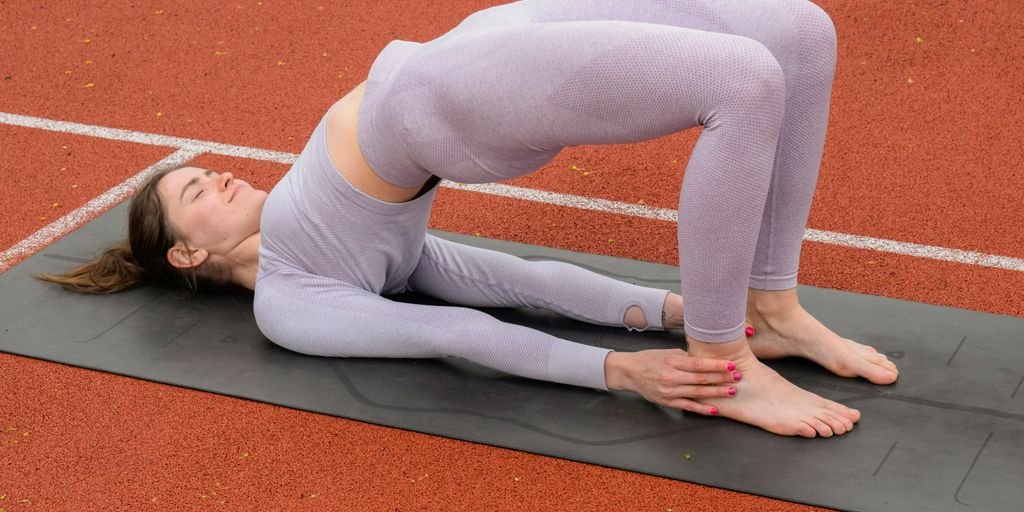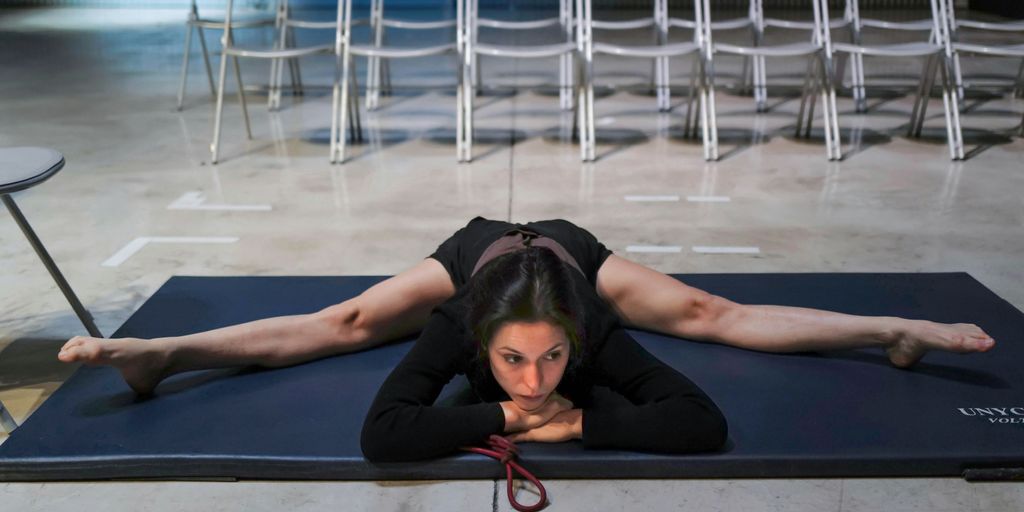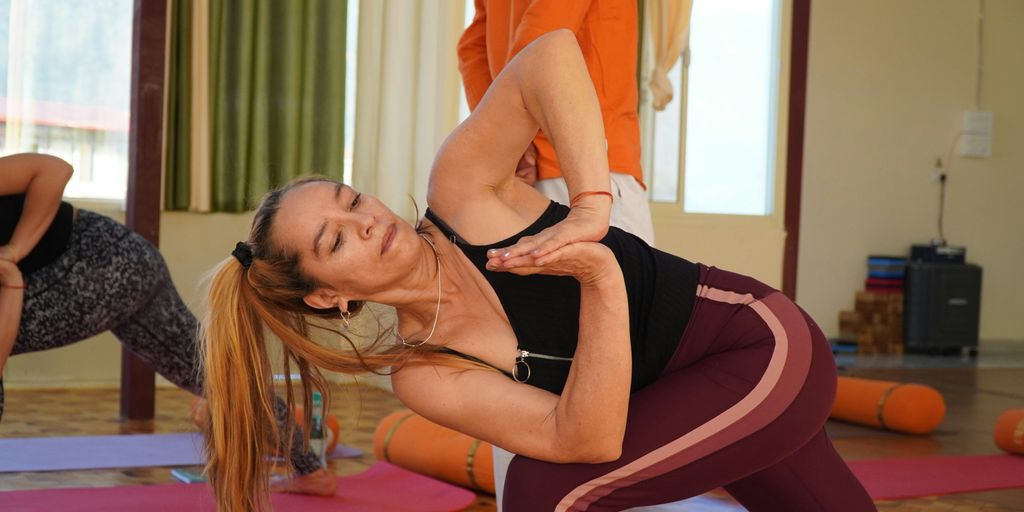
Unlocking Serenity: Exploring the Profound Benefits of Yoga Inversions
So, you've heard about yoga inversions, right? Those poses where your head is below your heart. They can seem a little scary at first, maybe even impossible. But trust me, once you get past the initial hesitation, the inversions benefits are pretty amazing. It's not just about looking cool in Downward-Facing Dog; there's a whole lot going on for your body and mind when you flip yourself upside down. Let's break down why trying some inversions might be a good idea for your yoga practice.
Key Takeaways
- Inversions boost how well your blood and lymph move around your body.
- They help make your core and upper body stronger.
- Doing inversions can help with stress and make you feel calmer.
- These poses can wake up energy points in your body and help your nervous system feel more balanced.
- It's important to learn inversions slowly and safely, paying attention to your body's signals.
Discovering The Physical Inversions Benefits
When you flip upside down, your body gets a real workout in ways you might not expect. It’s not just about looking cool in a handstand; there are some solid physical gains to be had.
Boosting Circulation And Lymphatic Flow
Think of your circulatory system like a highway. When you're upright, gravity makes it a bit harder for blood to travel back up to your heart, especially from your legs. Inversions help reverse this, making it easier for blood to flow. This means more oxygen gets delivered to your brain and other organs. It also helps your lymphatic system, which is like your body's waste removal service. Normally, it relies on muscle movement to get things moving, but being upside down gives it a boost, helping to clear out toxins. It’s a great way to give your internal plumbing a bit of a tune-up, and you can really feel the difference after a good inversion session. Many people find that regular practice helps with swelling in the legs and feet. It’s a simple change that can have a big impact on how your body functions day-to-day. You can read more about the benefits of inversion exercises.
Strengthening Core And Upper Body
Holding yourself upside down, whether it’s in a supported shoulder stand or a more challenging headstand, requires a surprising amount of strength. Your core muscles have to work hard to keep you stable and prevent you from toppling over. This constant engagement builds up strength and endurance in your abdominal and back muscles. Your shoulders, arms, and even your wrists also get a good workout as they support your body weight. Over time, you’ll notice an improvement in your overall upper body strength and stability, which can translate to better posture and less strain in your daily activities.
Improving Digestion And Metabolism
It might sound a little odd, but inversions can actually help your digestive system. When you’re inverted, gravity assists the natural movement of food through your intestines. This can help with issues like bloating and constipation. Some people also report that inversions help to regulate their metabolism. While it’s not a magic bullet for weight loss, the increased blood flow to the abdominal organs and the gentle compression can support better digestive function. It’s like giving your insides a gentle massage, helping everything to move along more smoothly.
It's important to approach inversions with care. Starting with supported poses and gradually working your way up is key to avoiding injury and reaping the rewards.
Unveiling The Mental Inversions Benefits
When you flip upside down, something interesting happens in your brain. It’s not just about the physical challenge; inversions can really shift your mental state. Many people find that spending time in poses like Downward-Facing Dog or even a gentle Supported Shoulderstand helps quiet the mental chatter. It’s like hitting a reset button for your thoughts.
Reducing Stress And Anxiety Levels
Think about how your mind races when you're stressed. Inversions can help slow that down. By changing your perspective, literally, you can interrupt anxious thought patterns. The increased blood flow to the brain is thought to have a calming effect, similar to how deep breathing works. It’s a physical way to tell your nervous system to chill out a bit. Some studies suggest that regular practice can lead to a noticeable drop in cortisol, the stress hormone. It’s a simple, yet powerful, tool for managing daily worries.
Enhancing Focus And Mental Clarity
Ever feel like your brain is foggy? Inversions can help clear that up. When you're upside down, your brain gets a fresh supply of oxygenated blood. This can make it easier to concentrate and think more sharply. It’s like waking up your brain cells. You might find that after a few minutes in an inversion, you can tackle tasks with more precision. This boost in cognitive function is one of the reasons many people turn to yoga for a mental pick-me-up. It’s a great way to get a mental edge, and you can find more about the psychological benefits of inversion yoga poses.
Cultivating A Sense Of Calm
Beyond just reducing stress, inversions can help you find a deeper sense of peace. The act of being upside down requires a certain amount of trust and surrender. You have to let go of the need to be upright and stable. This can translate into a more relaxed approach to life's challenges. It’s about finding stillness even when your body is in an unusual position. This practice can help you feel more grounded and centered, even after you’ve come back down to your feet. It’s a gentle reminder that you can find calm in unexpected places.
Exploring The Emotional Inversions Benefits
Getting upside down can really shift your perspective, not just physically, but emotionally too. It’s like the world flips, and suddenly, things that seemed overwhelming might feel a bit more manageable. This shift in viewpoint is a powerful tool for emotional well-being. When you're in an inversion, you're actively working with gravity in a new way, and this can translate into how you handle life's ups and downs.
Fostering Confidence And Self-Esteem
Successfully holding an inversion, even for a few breaths, builds a quiet kind of confidence. It’s a personal victory, a testament to your body’s strength and your mind’s ability to stay present. Each time you try a new inversion or hold one longer, you’re proving to yourself that you can do hard things. This builds up your belief in your own capabilities, which spills over into other areas of your life. It’s not about showing off; it’s about knowing you can meet a challenge and come out the other side feeling capable. It’s a bit like learning to ride a bike – wobbly at first, but then you get it, and that feeling of independence is amazing. This can be a great complement to mental health support, as yoga can be a valuable addition to traditional treatments for depression, offering benefits such as stress reduction, improved sleep, and enhanced emotional balance. yoga and depression
Releasing Stored Emotional Tension
Think about it: when we're stressed or holding onto emotions, we often carry that tension in our bodies, especially in our shoulders and hips. Inversions can help release some of that stored-up stuff. By inverting, you're changing the pressure on your body and encouraging blood flow to areas that might be stagnant. This physical release can sometimes feel like an emotional release too. It’s not uncommon to feel a bit teary or just lighter after a practice that includes inversions, as if you’ve let go of something you didn’t even realize you were holding onto so tightly.
Promoting A Positive Outlook
There’s something about being upside down that can just make you feel a bit more optimistic. Maybe it’s the novelty, or maybe it’s the increased blood flow to the brain, but inversions often leave people feeling more cheerful and hopeful. It’s a way to shake things up, literally, and break free from mental ruts. When you can approach your practice with a sense of playfulness and curiosity, it’s easier to carry that attitude off the mat and into your day. It’s a reminder that even when things feel heavy, a simple shift in perspective can make a big difference.
Understanding The Energetic Inversions Benefits

When we talk about yoga inversions, it's not just about the physical stuff. There's a whole energetic side to it that's pretty interesting. Think of it like flipping a switch inside your body. Going upside down can really shift how your energy flows, and that can make a big difference in how you feel overall. It's like giving your internal system a good shake-up.
Awakening The Body's Energy Centers
In yoga, we often talk about energy centers, or chakras. When you do an inversion, like a headstand or a shoulder stand, you're essentially reversing the flow of energy. This can help to clear out blockages and wake up these centers. It's believed that this process can help balance your entire energy system, leading to a greater sense of well-being. Practicing chakra yoga is also a great way to work with these energy points.
Balancing The Nervous System
Inversions can have a really calming effect on your nervous system. By turning your body upside down, you can help to switch off that fight-or-flight response that so many of us are stuck in. This can lead to a feeling of deep relaxation and peace. It's like hitting the reset button for your brain and body.
Increasing Vitality And Stamina
While it might seem counterintuitive, going upside down can actually give you more energy. When circulation improves, your brain gets more oxygen, and that can make you feel more alert and alive. Over time, with regular practice, you might find you have more stamina for your daily activities. It's a way to boost your natural energy reserves without needing caffeine!
It's amazing how changing your physical orientation can impact your internal state. The energetic shifts are subtle but profound.
Mastering Foundational Inversions Safely

Getting into inversions can feel a bit daunting at first, right? It’s totally normal to feel a little wobbly or unsure. But the good news is, you don't have to jump straight into a handstand. We can build up to it safely and smartly. The key is preparation and listening to your body.
Preparing the Body with Gentle Poses
Before you even think about going upside down, it’s smart to warm up. Think about poses that build strength and flexibility in the right places. Gentle backbends like Cobra or Upward-Facing Dog are great for waking up the spine. Poses like Downward-Facing Dog and Plank help build the arm and shoulder strength you’ll need. Even simple stretches for your wrists can make a big difference. It’s all about getting your body ready for the challenge.
Proper Alignment for Neck and Spine
This is super important, especially when you’re new to inversions. When you’re upside down, your neck and spine are carrying your weight. You want to make sure everything is stacked correctly to avoid any strain. For poses like Headstand, your weight should be on your forearms and the crown of your head, not just your neck. It’s about distributing the load evenly. Thinking about keeping your core engaged helps protect your back. If you’re unsure, using props like a yoga mat can provide a bit of cushioning and support.
Listening to Your Body's Signals
This is probably the most critical piece of advice. Your body will tell you what it needs. If something feels sharp or painful, stop. Don't push through pain. It’s okay to back off or try a modified version. Maybe you’re not ready for a full handstand yet, and that’s perfectly fine. Perhaps a supported shoulder stand or even just practicing lifting your legs in a supported bridge pose is what your body needs right now. Respecting your limits is how you progress without injury.
Integrating Inversions Into Your Practice
So, you've been playing around with inversions and feeling pretty good about it. That's awesome! Now, how do you actually make them a regular part of your yoga routine without, you know, hurting yourself? It’s not just about jumping into a headstand on day one. Think of it like building anything – you need a solid plan.
Choosing The Right Inversions For You
Not all inversions are created equal, and what works for one person might not be the best fit for another. Start by thinking about your current strength and flexibility. Are you comfortable with basic poses like Downward-Facing Dog? That’s a good starting point. Maybe try something like Legs-Up-the-Wall pose first. It’s super gentle and still gives you some of the benefits. As you get stronger, you can explore poses like Dolphin pose or even Forearm Plank. It’s really about finding what feels right for your body right now. Don't rush into the fancy stuff; the basics are where the real progress happens.
Building Strength Gradually
This is probably the most important part. You can't expect to hold a handstand for five minutes if you've just started. It takes time. Focus on building the muscles that support inversions, like your shoulders, arms, and core. Plank pose is your best friend here. Hold it for longer periods, maybe try variations. Dolphin pose is also great for building shoulder strength. You might even want to work on poses that mimic parts of inversions, like lifting one leg in Downward-Facing Dog. Slow and steady wins the race when it comes to inversions.
Consistency For Lasting Inversions Benefits
Just like anything else, if you want to see real changes, you need to stick with it. Try to incorporate inversions into your practice a few times a week. Even short sessions can make a difference. Maybe dedicate five minutes at the end of your regular practice to work on a specific inversion. It’s better to do a little bit often than to do a lot once in a blue moon. Remember to listen to your body, though. If you feel any pressure, discomfort, or pain in your head, eyes, neck, or throat, it’s time to come down immediately. You can find some helpful tips on avoiding inversions if you experience pressure, discomfort, or pain in your head, eyes, ears, neck, or throat here. Consistency is key, but so is being smart about it.
Finding Your Balance
So, after all that, what's the takeaway? Yoga inversions aren't just about looking cool or flipping yourself upside down. They really can make a difference in how you feel, both physically and mentally. You might notice better circulation, a calmer mind, or just a bit more energy. It takes practice, for sure, and maybe a few wobbles along the way, but the rewards are pretty great. Don't be afraid to try them out, listen to your body, and see what happens. You might just find a new favorite way to feel good.
Frequently Asked Questions
What exactly are yoga inversions?
Inversions, like headstands or shoulder stands, flip your body upside down. This helps blood flow to your brain and can make your body feel more energized. It's like giving your body a refreshing reset!
Can inversions actually help my body feel better?
Yes, inversions can be super helpful for your body. They can make your blood move better, strengthen your arms and belly, and even help your tummy work more smoothly.
Do inversions help with feeling stressed or worried?
Absolutely! When you do inversions, it can really help calm your mind. It's like hitting the pause button on worries and feeling more peaceful and focused.
How can inversions affect my feelings and confidence?
Think of inversions as a way to boost your inner power. They can help you feel stronger and more confident, like you can take on anything. Plus, they might help you let go of feelings that have been stuck inside.
Is it safe to try yoga inversions?
It's super important to be careful. Start with easy poses and make sure your neck and back are in the right spot. Always listen to your body – if something feels wrong, stop!
How should I start practicing inversions?
Start slow! Try simple inversions first, like legs up the wall. As you get stronger and more comfortable, you can try more challenging ones. Doing them often, even for short times, is key to seeing the benefits.


